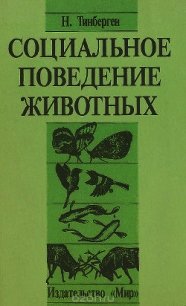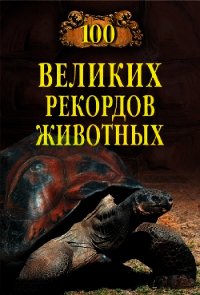Волшебная эволюция - Стестад Ханна Нюборг (читать книги онлайн полностью без регистрации .txt, .fb2) 📗
Дискуссия о выборе самок в значительной степени основана на данных главы 7 (Sexual Selection, Sperm Competition and Sexual Conflict) книги An Introduction to Behavioural Ecology, указанной в начале списка литературы. Ключевые источники по теме:
Fisher R. А. (1930). The genetical theory of natural selection. Clarendon. Oxford.
Zahavi A. (1975). Mate selection — a selection for a handicap. Journal of theoretical Biology. 53(1). 205–214.
Об эволюции красоты в природе:
Prum R. (2017). The Evolution of Beauty: How Darwin’s forgotten theory of mate choice shapes the animal world — and us. Doubleday. USA.
Критика книги Прама:
Patricelli G. L., Hebets Е. A., Mendelson Т. С. (2019). Book review of Prum, RO 2018. The evolution of beauty: How Darwin’s forgotten theory of mate choice shapes the animal world — and us (2017). Doubleday. 428 pages. ISBN: 9780385537216. Evolution. 73(1). 115–124.
Брачные узы у альбатросов:
Jouventin P., Charmantier A., Dubios М. P., Jarne P., Bried J. (2007). Extra-pair paternity in the strongly monogamous Wandering Albatross Diomedea exulans has no apparent benefits for females. Ibis. 149(1). 67–78.
Данные о количестве внебрачных отпрысков у деревенских ласточек и домовых воробьев:
Kleven О., Jacobsen F., Robertson R. J., Lifjeld J. T. (2005). Extrapair mating between relatives in the barn swallow: a role for kin selection? Biology Letters. 1(4). 389–392.
Wetton J. H., Parkin D. T. (1991). An association between fertility and cuckoldry in the house sparrow. Passer domesticus. Proceedings of the Royal Society of London B: Biological Sciences. 245(1314). 227–233.
Stewart I. R., Hanschu R. D., Burke Т., Westneat D. F. (2006). Tests of ecological, phenotypic, and genetic correlates of extra-pair paternity in the house sparrow. The Condor. 108(2). 399–413.
О полиандрии:
Taylor М. L., Price Т. A., Wedell N. (2014). Polyandry in nature: a global analysis. Trends in ecology & evolution. 29(7). 376–383.
Агрессия у крякв:
Burns J. Т., Cheng К. М., McKinney F. (1980). Forced copulation in captive mallards. I. Fertilization of eggs. The Auk. 97(4). 875–879.
Titman R. D., Lowther J. K. (1975). The breeding behavior of a crowded population of mallards. Canadian Journal of Zoology. 53(9). 1270–1283.
Битвы жуков:
Crudgington H. S., Siva-Jothy М. T. (2000). Genital damage, kicking and early death. Nature. 407(6806). 855.
Об экзотичных формах см. главу 7 (с. 212–213) книги An Introduction to Behavioural Ecology, которая указана в начале списка литературы.
О самцах лесной завирушки:
Davies N. В. (1983). Polyandry, cloaca-pecking and sperm competition in dunnocks. Nature. 302(5906). 334.
О лигеях:
Sillen-Tullberg В. (1981). Prolonged copulation: a male ‘postcopulatory’ strategy in a promiscuous species Lygaeus equestris (Heteroptera: Lygaeidae). Behavioral Ecology and Sociobiology. 9(4). 283–289.
О сусликах:
Sherman P. W. (1989). Mate guarding as paternity insurance in Idaho ground squirrels. Nature. 338(6214). 418.
О постельных клопах:
Stutt A. D., Siva-Jothy М. T. (2001). Traumatic insemination and sexual conflict in the bed bug Cimex lectularius. Proceedings of the National Academy of Sciences. 98(10). 5683–5687.
Брачные ритуалы у подвязочных змей:
Mason R. Т., Halpern М. (2011). Chemical ecology of snakes: from pheromones to receptors. Frontiers in Endocrinology. 86.1664–2392.
Shine R., Olsson М. М., Mason R. T. (2000). Chastity belts in gartersnakes: the functional significance of mating plugs. Biological Journal of the Linnean Society. 70(3). 377–390.
Friesen C. R., Uhrig E. J., Squire М. K., Mason R. Т., Brennan P. L. (2014). Sexual conflict over mating in red- sided garter snakes (Thamnophis sirtalis) as indicated by experimental manipulation of genitalia. Proceedings of the Royal Society B: Biological Sciences. 281(1774). 20132694.
Моногамия у оляпок:
Øigarden Т., Borge Т., Lifjeld J. T. (2010). Extrapair paternity and genetic diversity: the white-throated dipper Cinclus cinclus. Journal of avian biology. 41(3). 248–257.
Неверность у деревенских американских ласточек:
Stapleton М. К., Kleven О., Lifjeld J. Т., Robertson R. J. (2007). Female tree swallows (Tachycineta bicolor) increase off-spring heterozygosity through extrapair mating. Behavioral Ecology and Sociobiology. 61(11). 1725–1733.
Мои исследования птиц:
Stostad H. N., Johnsen A., Lifjeld J. Т., Rowe M. (2018). Sperm head morphology is associated with sperm swimming speed: a comparative study of songbirds using electron microscopy. Evolution. 72(9). 1918–1932.
Stostad H. N., Rowe М., Johnsen A., Lifjeld J. T. (2019). Sperm head abnormalities are more frequent in songbirds with more helical sperm: A possible trade-off in sperm evolution. Journal of Evolutionary Biology. DOI: 10.1111/jeb.13446.
Моногамия у лебедей-кликунов:
Brazil М. A. (1981). The behavioural ecology of the Whooper Swan (Cygnus cygnus cygnus). University of Stirling thesis.
Rees E. C., Lievesley P., Pettifor R. A., Perrins C. (1996). Mate fidelity in swans: an interspecific comparison. Partnerships in Birds: The Study of Monogamy (ed. Black J. М.). P. 118–137. Oxford University Press, Oxford.
Рассказ о львах и львятах основан на данных, содержащихся в книге:
Pusey А. Е., Packer С. (1994). Infanticide in lions: Consequences and counterstrategies. Infanticide and parental care (eds. Parmigiani S., vom Saal F.). P. 277–299. Harwood. Chur, Switzerland.
Дискуссия о причинах гибели львят:
Packer С. (2000). Infanticide is no fallacy. American Anthropologist. 102(4). 829–831.
Об эволюционной стратегии:
Palombit R. А. (2015). Infanticide as sexual conflict: coevolution of male strategies and female counterstrategies. Cold Spring Harbor perspectives in biology. 7(6). a017640.
О выборе партнеров:
Bailey N. W., Zuk M. (2009). Same-sex sexual behavior and evolution. Trends in Ecology & Evolution. 24(8). 439–446.
Текст об императорских пингвинах в значительной степени основан на интервью с Мишель Ларю от декабря 2018 года:
www.drmichellelarue.com.
О биологии императорских пингвинов:
Le Maho Y. (1977). The emperor penguin: A strategy to live and breed in the cold: Morphology, physiology, ecology, and behavior distinguish the polar emperor penguin from other penguin species, particularly from its close relative, the king penguin. American Scientist. 65(6). 680–693.
О том, как пингвины сбиваются в кучу:
Gilbert С., Robertson G., Le Maho Y., Naito Y., Ancel A. (2006). Huddling behavior in emperor penguins: dynamics of huddling. Physiology & behavior. 88(4–5). 479–488.



